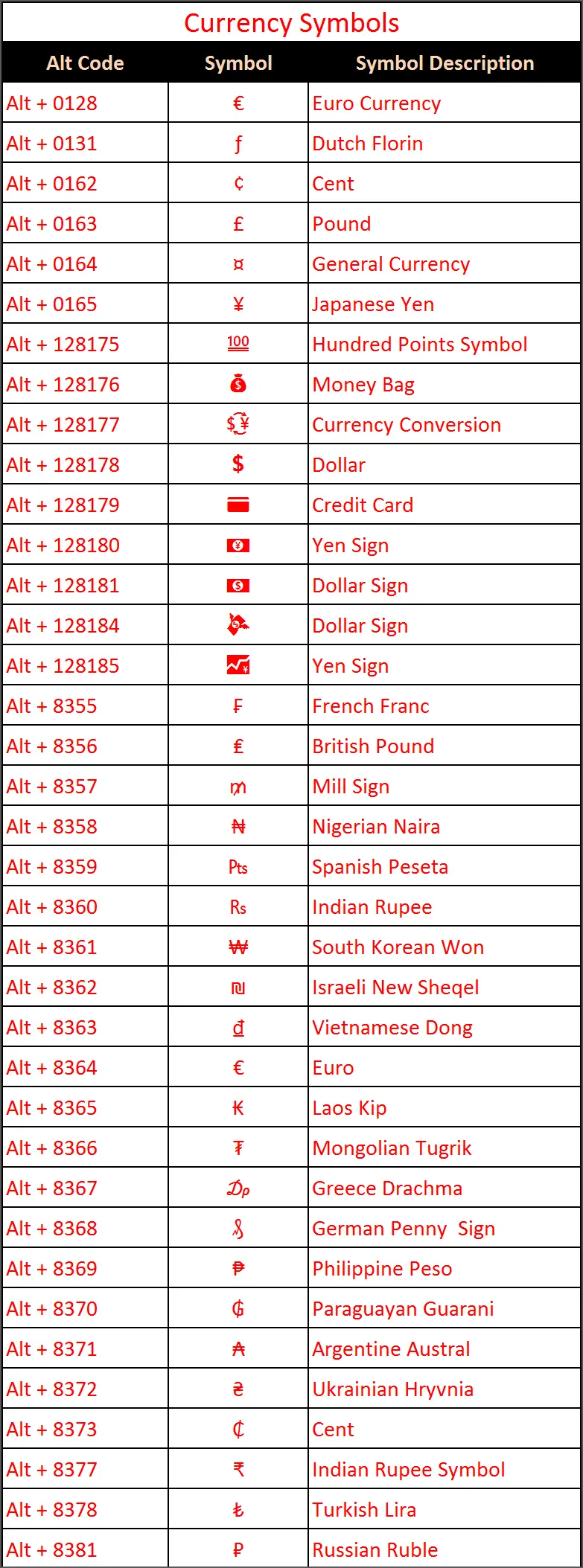

- #Microsoft word symbols character codes code#
- #Microsoft word symbols character codes plus#
- #Microsoft word symbols character codes windows#
The most commonly shared keys are the 7, 8, 9, u, i, j, k, l, and m keys. Some systems also provide an Fn (function key) button, which must also be depressed in order to use the Alt+ key codes. If that’s the case, the Number Lock keypad is generally on several of the inside keyboard keys, sharing with other characters. Some laptops and tablets don’t have numeric keypads. Special characters on laptop or tablet keyboards
#Microsoft word symbols character codes plus#
IMPORTANT NOTE: Do not enter the plus signs, just the Alt key and the following number OR the characters followed by the simultaneous Alt and X keys.
#Microsoft word symbols character codes code#
The ASCII decimal code for this same symbol is Alt+ 106, but that code and both the Unicode and ASCII Hex codes (006A plus Alt+ X displays the Latin lowercase letter “j.” This means some symbols (especially the downloaded ones) may only be available through the Insert > Symbol commands on the Ribbon menus. But notice that some of the new symbols also have letters in the codes such as the Hex ASCII code (aka Unicode) 006A, which is supposed to display a decorative heart from a downloaded symbol font called “KR All About the Heart.” Notice that all of the Alt codes in the charts above are represented by numbers for example, the White Queen is Alt+ 9813. Notice that many of the 9,000-level symbols are repeats of the original set (1 thru 255). Start with 1,000 and try some random numbers through 10,078. The Alt+ codes extend out five digits, so if you can’t find the symbol you’re looking for, play around with the numbers and see what you get. That’s why so many users get discouraged when looking for the British pound symbol £ (Alt+ 0163) and end up with the lowercase Latin letter acute accent ú (Alt+ 163)-which is also found at Alt+ 0250. In fact, Alt+ 1 through Alt+ 31 (without the preceding zeroes) are icon symbols (such as happy faces, card suits, astrology icons, etc.) and 176 through 223 are graphic lines and polygons. But the coolest of all are the graphics and icon symbols. In addition to the keyboard characters, you’ll find decimal codes for Greek and Latin letters, accent letters, pronunciation symbols over the alphabet, and mathematical symbols, such as the division and square root operators, the accent grave and circumflex symbols, plus worldwide currency symbols, and more. For example, Alt+ 0251 = û (the Latin small letter u with circumflex symbol above it) while Alt+ 251 = √ (the square root sign)-and so forth until you reach 256, which is the same as 0256 (both produce the pronunciation symbol for an uppercase ‘long’ A that is, Ā). You can test this yourself by entering both versions of these numbers. Highlight one or more of the characters in the Characters to Copy field you wish to insert then click the Copy button.Somewhere around the decimal code 256, the preceding zero is no longer necessary.You can Select more than one character at this time. Double-click on any character you wish to insert then click the Select button to make it appear in the Characters to Copy field.
#Microsoft word symbols character codes windows#
Windows 7/Vista Character Map with Advanced options visible. Click the block to see available characters in that font.

In the Group By menu, select a Unicode Subrange to open a pop-up. To narrow selection by Unicode block, check the Advanced View at the bottom to reveal additional menus.If the character you want is not in the grid, change the font to Arial Unicode MS, Tahoma, Times New Roman,.For other scripts, use Arial Unicode or some other appropriate font. NOTE: Many Windows fonts include Cyrillic and Greek letters by default.

If necessary, use the scroll bars on the right to view more characters.


 0 kommentar(er)
0 kommentar(er)
